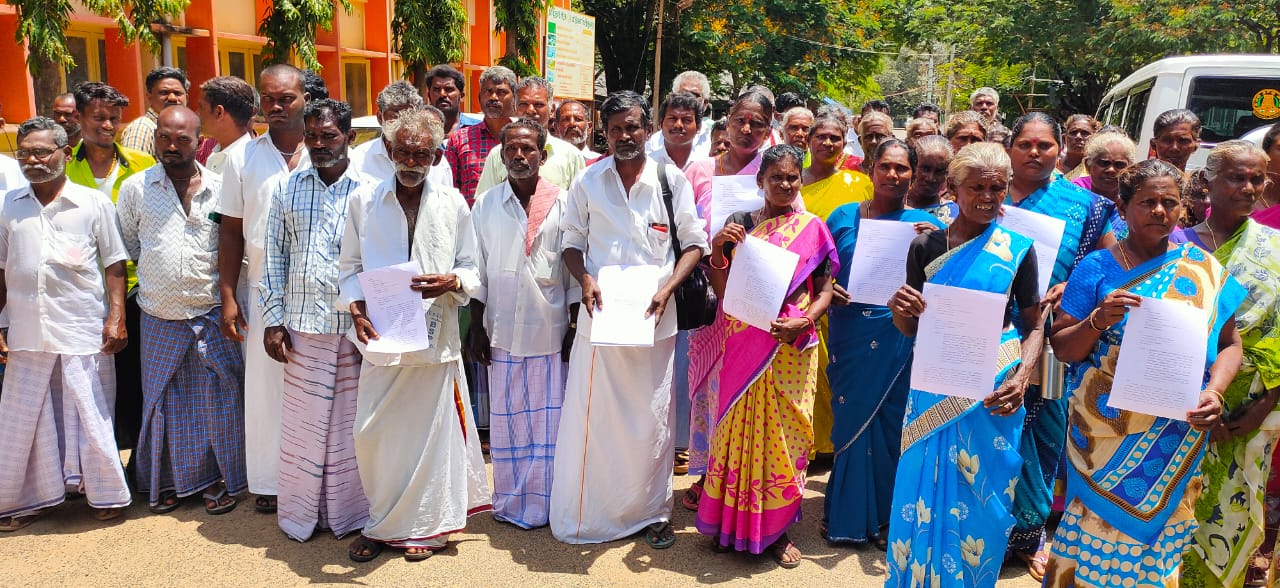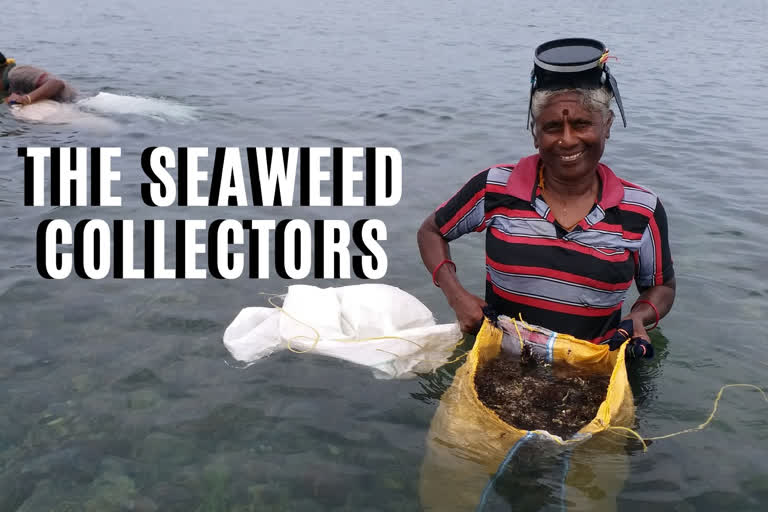Ramanathapuram: The day starts as early as 6 am for women like Nambu in her sixties from Chinnapalam and along with her neighbours, she heads to the sea.
Spread in 10,500 square kilometres, Gulf of Mannar is a rich marine national park which is home for 3600 more marine flora and fauna species. There are also more than seven tiny islets in this part of the sea around which these women collect the seaweed.
Seafaring and fishing are conventionally kept as men's bastion as the coastal communities are sort of rigid to keep the women confined to the shores.
But there are women who have decided to eke out a living from the sea they are kept away from and the women along the coastal villages of Ramanathapuram are one such sect. For decades, these women have found that seaweed available in these waters fetch a price through which they can fend for them and their families as alcoholism weans away the earnings of their seafaring men.
"I have been collecting seaweeds for last 52 years", quipped Nambu as she gets busy adjusting the plastic sack behind her back and the scuba glass in her head. In a second, she disappears into the shallow waters to scour the seaweed, quickly bagging it in her backpack before disappearing again into the blue waters.
Her colleague, Mari, who is also in her sixties, has been collecting seaweeds since she was seven years old. "The availability of seaweed depends on the season. We collect in the southern part of the islands for six months and shift to northern part for the rest of six months", says the elderly woman.
After collecting two bags full, they float their collection using a buoy, before venturing further into the sea. They wind up around 2 pm and head towards drying their catch. Depending on the catch, these women make anywhere from 300 to 600 rupees.
The seaweed collected by these women is procured by middlemen who send it to various units starting from food processing to pharmaceutical industries.
But life is not smooth for these simple women and it gets only worse as global warming and climate change threaten their livelihood. Post tsunami in 2004, much changed in the seas especially the sea currents which nurture the marine organisms.
In fact, the coastal communities divide the time as post and pre-tsunami. The tsunami brought their traditional knowledge of sensing seaweed growth to nought, rue the women. "Earlier we knew, where the seaweed will grow in which part of the year and we also knew what type of seaweed available. Nothing is the same anymore", sighed a woman.
Besides, the restrictions imposed by the forest department cripple their movement around the islets. The state forest department has been taking ou number of measures to protect the fragile eco-system of the islets in the Gulf of Mannar but the traditional fisherfolk sees the measures as curbing their livelihood even when the mechanized fishing - though much more destructive - is given a free ride in the region.

Starting from March 7, the women and traditional fishermen have been agitating in district headquarters against the forest department.
Fishermen activist, M Karunamoorthy warned that their protest will only turn intense if the authorities continue oppressing the seaweed collecting women and traditional fishermen along this coastal stretch.
Also, read: Japanese woman's novel attempt to revive Indian handloom sector



